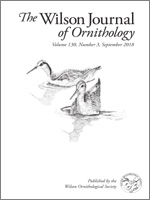Geographic variation in mating signals is of interest to evolutionary biologists because the consequences of spatial divergence may lead to behavioral discrimination, assortative mating, and speciation. Birdsong is a mating signal of songbirds, and geographic variation in the form of small-scale dialects or large-scale regiolects has been documented in many species. We studied macrogeographic variation in song of the MacGillivray's Warbler (Geothlypis tolmiei) to determine the pattern of song variation in this species. Hypotheses used to explain the evolution of song divergence were also examined. We found extensive individual variation in the cultural units and physical parameters of song that overwhelmed differences among populations. We did not find dialects in the breeding range but did find a pattern of clinal variation with song differences increasing with increasing geographic distances among populations. Hypotheses that explain patterns of song divergence in other species did not apply to MacGillivray's Warblers. Selection for novel songs that facilitates individual recognition may be important in this species that breeds in extremely dense vegetation. Extensive individual variation among male tutors within and among populations may also inhibit dialect formation and perpetuate song diversity in future generations.
How to translate text using browser tools
1 September 2018
Macrogeographic variation in song of the MacGillivray's Warbler (Geothlypis tolmiei)
Jay Pitocchelli,
David Guerra,
Jaimie Kender
ACCESS THE FULL ARTICLE
geographic variation
Geothlypis tolmiei
MacGillivray's Warbler
song





